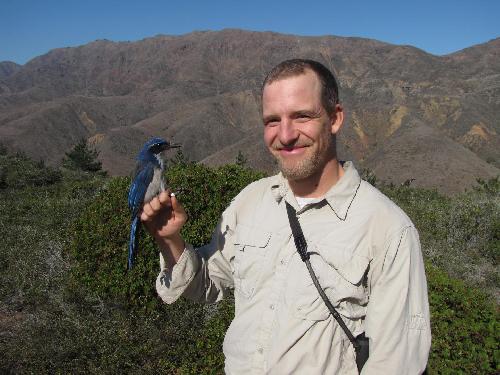A forthcoming Review in The Condor: Ornithological Applications explores how oaks and pines depend on corvids, the group of birds that includes ravens, crows, and jays, to reproduce and spread--and how birds may be the key to helping these valuable trees weather the challenges of habitat fragmentation and climate change.
Corvids store seeds in small caches spread across the landscape, a behavior called "scatter-hoarding." Birds cache more seeds than they eventually eat, so some seeds sprout and scatter-hoarding becomes seed dispersal, helping trees colonize new areas. Many oaks and pines have specific adaptations to encourage dispersal by birds, producing large, nutritious seeds with protective chemicals that keep them from rotting, which encourages scatter-hoarding by eliminating the need for animals to eat the seeds immediately.
The Review by Mario Pesendorfer of the University of Nebraska-Lincoln and his colleagues at the Smithsonian Migratory Bird Center, Cornell Lab of Ornithology, and The Nature Conservancy explores specific examples of such relationships from around the world. In Europe, Eurasian Jays are proving to be a crucial ally for oaks as habitat fragmentation and climate change increasingly impact European hardwoods. In the western U.S., researchers have shown that repeated long-distance dispersal events by Clark's Nutcrackers are essential to establish and maintain Ponderosa Pine populations and that Pinyon Jays help maintain the tree's genetic diversity. And in the eastern U.S., Blue Jays speed forest fire recovery by increasing their caching effort after fires and selecting canopy gaps as cache sites.
 Mario Pesendorfer is the lead author of a review on mutualisms between trees and corvids, such as the Island Scrub-jays pictured here. Credit: K. Langin
Mario Pesendorfer is the lead author of a review on mutualisms between trees and corvids, such as the Island Scrub-jays pictured here. Credit: K. Langin
Harnessing this bird behavior may aid habitat restoration. Europeans have been aware of the relationship between jays and oaks for centuries, and managers in some areas of Western Europe are planting small stands of seed-source trees and relying on corvids to help disperse them across the landscape. In America, conservationists are exploring the possibility of reintroducing Channel Island Scrub-Jays to islands where they were extirpated to speed the recovery of oak and pine vegetation after livestock removal.
"In light of the globally changing climate and increasing habitat fragmentation, these winged dispersers that transport seeds over long distances are likely to become more important, as they enable plant populations to shift their range," says Pesendorfer. "Since oaks and pines are important keystone species that themselves provide habitat for hundreds of animal species, such dispersal can have ecosystem-wide benefits."
source: Central Ornithology Publication Office